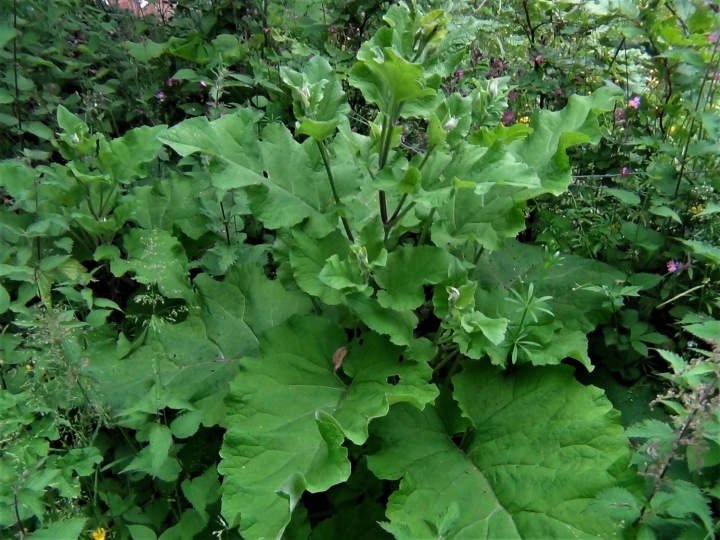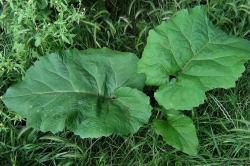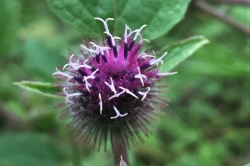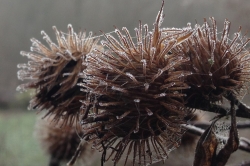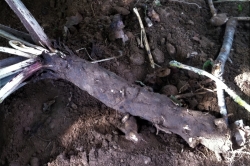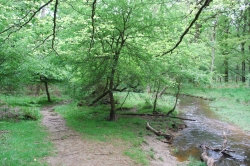You must have the land owners permission to dig up Burdock roots but if you ask any farmer, they might laugh at you but they don’t usually mind you digging up persistent weeds for them.
Home / Hedgerow Guide /
Burdock
Burdock
| Hedgerow Type | |
| Common Names | |
| Scientific Name |
Arctium minus, Arctium lappa |
| Season Start |
Sep |
| Season End |
Dec |
Please note that each and every hedgerow item you come across may vary in appearance to these photos.
Leaves
Very large, dark green on top, lighter and slightly downy underneath. Heart shaped towards the base becoming more spear like on the flower stem.
Flowers
Purple and rather like a thistle flower until dry and brown, forming a ‘bur’. Flowers mid Summer to Autumn.
Seeds
The ‘burrs’ or seeds are the annoying parts that stick strongly to your clothes or tangle your hair if you are unlucky enough to come into contact with them.
Roots
Black and usually like a very long carrot but due to the stoney soil it usually grows in, they can become forked or stunted.
Habitat
Waste ground, meadow edges, gardens, roadsides, alongside footpaths, woodland edges and around the edges of nearly all the farmers fields I’ve had the privilege to forage around.
Possible Confusion
Could be mistaken for Butterbur, Petasites hybridus, but Butterbur has much rounder leaves that are downy underneath. The jury is out on the edibility of Butterbur, as like purple flowered comfrey it contains small amounts of pyrrolizidine alkaloids which can be harmful to the liver.
Taste
The roots taste a bit like a cross between sweet chestnut and parsnip.
Frequency
Common.
Collecting
The roots are the best part of this plant but most often require major excavation to remove them from the usually hard and stoney ground. You need to forage the roots in Autumn or Spring of the first years growth to be of any worth. The roots can be roasted like parsnip, sliced finely and stir fried or made into a puree.
The stems of the younger plants can be eaten until about May when they become woody and bitter. The tough outside of the stem needs to be removed first revealing a thin vegetable that can be treated like asparagus or used raw in salads.
The leaves best use is to wrap and protect food when cooking in a ground or clay oven or in campfires.
Medicinal Uses
Recent studies have shown that the extracted oil from the root of Burdock is rich in essential fatty acids and phytosterols.
Other Facts
Burdock was commonly used in cooking in the UK in times past but has long been forgotten about. In Asia Burdock is still used to this day where it is collected commercially and called Gobo.
Starting in 1948 George de Mestral, a Swiss inventor, created Velcro after walking his dog and noticing the ‘burs’ from Burdock sticking to his dog.
If you are lucky to be near some Burdock when it starts to rain the leaves are big enough to make a foraged umbrella!



 (38 votes, average: 3.34 out of 5)
(38 votes, average: 3.34 out of 5)